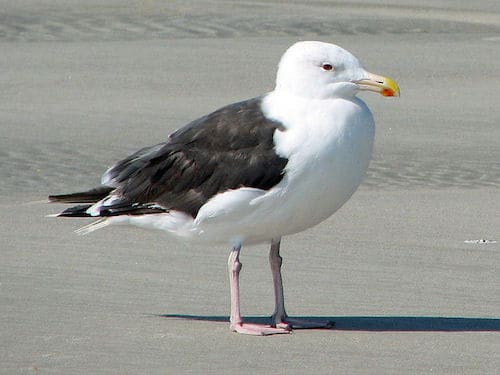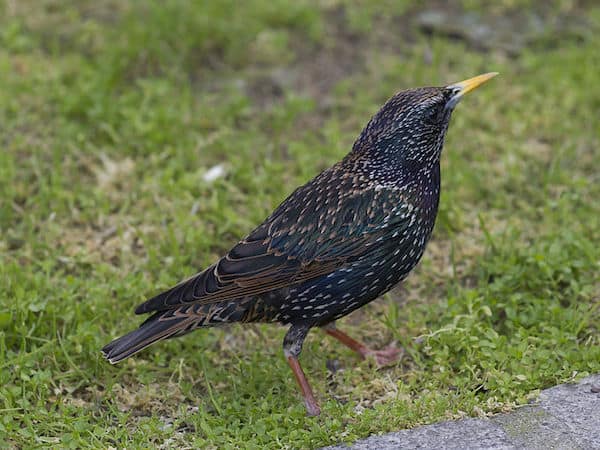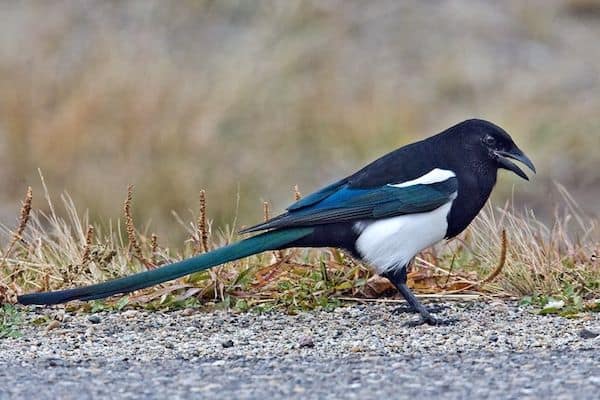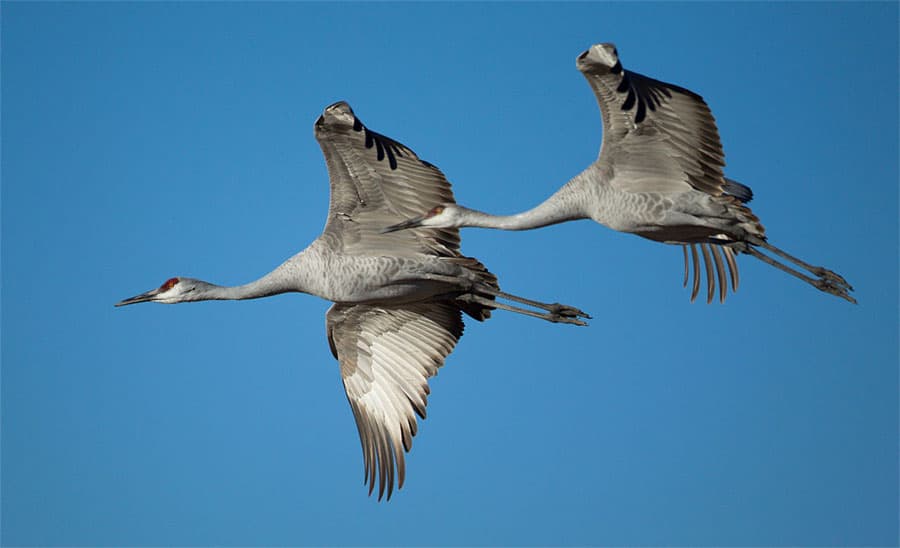The great black-backed gull is the largest gull species in the entire world. It has a solid build with broad wings and a thick bill. It has a white head and tail that is contrasted by a black back. Its wings are black on top and white underneath with black on its primaries. Its bill is yellow with a distinctive red patch near the tip of its lower mandible. Its legs are a dull pink and it has a thin red ring around its eyes.
Listen For
The great black-billed gull’s various calls are sporadic, deep, throaty combinations of kow, kow, kow and yeeow type sounds.
Find It
The great black-backed gull lives in select coastal areas in the northeastern parts of North America. It can be found on the shores of Newfoundland and Labrador all the way down south along the Atlantic coast to South Carolina.
There they live along the rocky and sandy beaches, shorelines, docks, piers and more. During the winter some move further out across the Atlantic Ocean while others move more inland along large rivers and the Great Lakes.
Feeding Behavior
The great black-backed gull has a vast diet but feeds primarily on various sea life including crabs, mollusks, urchins, fish, and invertebrates. It also scavenges among garbage and steals food from other birds or eats the birds themselves.
Its also been known to eat carrion, rodents, insect, and berries on occasion. The great black-backed gull forages in a variety of locations including tide pools, mudflats, in shallow water, around boats, or while out swimming in the ocean.
Nesting Behavior
The great black-backed gull places its nest on the ground typically near a rocky outcropping someplace out of reach of the high tide. Both sexes build the nest, constructing a sizable, solid bowl of grass, moss, seaweed, feathers, and trash.
The female lays 2 to 3 eggs that are dull, faint yellow, green, or brown with dark markings. Both parents incubate the eggs for around 30 days before hatching. The young are able to fly after 45 days, but they stay close to their parents’ territory for protection and feeding an additional 3 to 4 weeks after.




